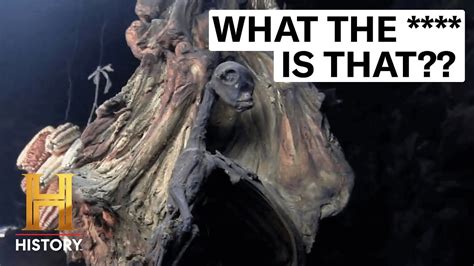
A Texas woman was startled after her doorbell camera captured footage of a large, unidentified creature lurking near her property, sparking intrigue and speculation online.
A Texas resident is seeking answers after a peculiar figure was caught on her Ring doorbell camera early Monday morning in her backyard in Azle, Texas. The woman, identified only as Renee, reviewed her security footage after her dogs started barking incessantly. What she discovered was a shadowy, upright form that she described as “large” and unlike anything she’d seen before. The grainy footage has since gone viral, fueling discussions and theories ranging from bears and bigfoot to more outlandish explanations.
Renee, who lives near a wooded area in Azle, reported that her dogs began barking around 2:00 a.m. on Monday. Initially dismissing it as typical nighttime noises, she decided to check the Ring camera the following morning. “I went to look at the Ring camera to see if I could see anything, and that’s what I saw,” she told local news outlets. The footage shows a dark, vaguely humanoid figure moving near her fence line. The image is somewhat obscured by the darkness and the camera’s night vision, making it difficult to discern precise details, but the figure appears to be tall and walks upright.
“At first, I thought it was a bear,” Renee said, “but then I saw it walking upright, and it definitely wasn’t a bear.” This observation led her to consider other possibilities, including the legendary Bigfoot. The video has been shared extensively on social media platforms, with users offering their own interpretations of what the creature might be. Some agree that it resembles Bigfoot, while others suggest it could be a person in costume, an animal with an unusual gait, or even a trick of the light.
The incident has garnered attention from both local residents and cryptozoologists, individuals who study animals that are rumored to exist but have not been scientifically recognized. The area around Azle, Texas, has a history of reported Bigfoot sightings, adding to the intrigue surrounding the recent video. While no definitive explanation has been offered, the footage has certainly reignited the debate about the existence of cryptids in the region.
“I’m not saying it’s Bigfoot,” Renee clarified, “but I don’t know what else it could be. It was definitely something large, and it was walking on two legs.” Her uncertainty reflects the ambiguity of the footage itself, which lacks the clarity needed to definitively identify the creature.
Adding to the mystery, Renee stated that there have been no signs of forced entry or any other disturbances on her property since the sighting. This has led some to speculate that the creature was simply passing through the area, perhaps searching for food or water. Others suggest that it could be a creature that is naturally elusive and avoids human contact.
The video has prompted discussions about the importance of security measures, such as doorbell cameras, in capturing unexpected events. While the footage may not provide a definitive answer to the mystery of the “large” creature, it has certainly raised awareness about the potential for wildlife encounters in residential areas. It also highlights the power of technology in documenting these occurrences, providing a glimpse into the unknown.
Law enforcement officials have not commented on the incident, as there is no evidence of any crime being committed. However, they have advised residents to remain vigilant and report any suspicious activity. The Texas Parks and Wildlife Department has also been notified and is monitoring the situation.
The incident serves as a reminder that even in suburban environments, encounters with wildlife are possible. Whether the creature in the video is a bear, a Bigfoot, or something else entirely remains a mystery. However, the footage has undoubtedly captured the imagination of many and sparked a renewed interest in the unexplained.
The ongoing discussion surrounding the video underscores the human fascination with the unknown and the enduring appeal of the Bigfoot legend. While skeptics remain unconvinced, believers see the footage as further evidence of the creature’s existence. Regardless of one’s perspective, the video serves as a reminder that the world is full of mysteries waiting to be solved.
The lack of clear answers has only fueled further debate. Experts in wildlife identification have been consulted, but the poor quality of the image makes it difficult to draw any firm conclusions. Some suggest that the figure could be a person suffering from a medical condition that affects their gait or posture. Others propose that it could be a deer or other animal standing on its hind legs, although this explanation seems less likely given the apparent size and shape of the figure.
Renee has expressed her gratitude for the support she has received from her community and online. She hopes that by sharing her story, she can help to shed light on the mystery and perhaps encourage others to share their own experiences. “I just want to know what it is,” she said. “I’m not trying to scare anyone, but I think it’s important for people to be aware of what’s out there.”
The incident remains unresolved, with no definitive explanation for the identity of the creature captured on Renee’s doorbell camera. However, the video has served as a catalyst for discussion, debate, and speculation, highlighting the enduring human fascination with the unknown and the potential for unexpected encounters in even the most ordinary of settings.
The attention garnered by this incident underscores the broader cultural fascination with unexplained phenomena. Stories of cryptids, unidentified creatures, and paranormal events continue to captivate audiences worldwide, fueling both scientific inquiry and creative imagination. This particular event, captured on a commonplace device like a doorbell camera, further blurs the line between the mundane and the extraordinary, adding a layer of intrigue to an otherwise typical suburban setting.
The video’s virality is a testament to the power of the internet in disseminating information and fostering collective discussion. Within hours of being posted online, the footage had been viewed thousands of times, shared across various social media platforms, and analyzed by amateur sleuths and seasoned experts alike. This rapid dissemination of information allows for a wider range of perspectives to be considered, contributing to a more comprehensive understanding of the event.
The incident also raises questions about the ethical implications of using security cameras to monitor private property. While these devices can be valuable tools for deterring crime and capturing evidence of suspicious activity, they also raise concerns about privacy and surveillance. The widespread use of doorbell cameras has led to a proliferation of footage capturing everyday moments, some of which may be inadvertently shared with the public. In this particular case, the footage captured a potentially significant event, but it also raises questions about the privacy of the creature itself, whatever it may be.
The debate surrounding the Texas woman’s doorbell camera footage is likely to continue, with new theories and explanations emerging as more information becomes available. However, one thing is certain: the incident has captured the imagination of many and sparked a renewed interest in the mysteries that lie just beyond our everyday perception.
Expanding the Context: The History of Bigfoot Sightings in Texas and Beyond
The Texas incident taps into a long and rich history of reported Bigfoot sightings, not just in Texas but across North America and even globally. The term “Bigfoot,” or “Sasquatch,” as it’s also known, generally refers to a large, hairy, bipedal hominid said to inhabit forests, particularly in the Pacific Northwest region of the United States and Canada.
Reports of Bigfoot-like creatures predate the modern term “Bigfoot” by centuries. Indigenous peoples have long told stories of wild men or hairy giants living in the wilderness. These stories often vary from tribe to tribe but share common elements such as the creature’s large size, human-like appearance, and elusive nature.
The modern Bigfoot phenomenon began to take shape in the mid-20th century, particularly in the 1950s. Several notable events helped to popularize the legend. In 1958, construction workers in Bluff Creek, California, discovered unusually large footprints, which were attributed to a mysterious creature dubbed “Bigfoot.” This event received widespread media coverage, solidifying the name and sparking a surge of interest in the phenomenon.
Another significant event was the 1967 Patterson-Gimlin film, which purportedly shows a female Bigfoot walking through a creek bed in northern California. The film is highly controversial, with some arguing that it is genuine evidence of Bigfoot’s existence, while others maintain that it is a hoax. Despite numerous attempts to debunk the film, it remains one of the most iconic and debated pieces of Bigfoot evidence.
Texas, while not as closely associated with Bigfoot as the Pacific Northwest, has its own history of reported sightings. The Piney Woods region of East Texas, with its dense forests and swamps, is often cited as a hotspot for Bigfoot activity. The “Texas Bigfoot Research Conservancy” (TBRC) is one of the major organizations dedicated to the study and investigation of these sightings.
The TBRC and other similar organizations collect and analyze reports of Bigfoot sightings, conduct expeditions to areas where sightings have been reported, and educate the public about the phenomenon. While they acknowledge that many reported sightings can be explained by misidentification of other animals or human activity, they believe that a significant number of reports warrant further investigation.
The scientific community remains largely skeptical of Bigfoot’s existence. The lack of conclusive physical evidence, such as a body or skeletal remains, makes it difficult to prove the creature’s existence. However, some scientists have expressed interest in the phenomenon, advocating for a more rigorous and scientific approach to investigating reported sightings.
Analyzing the Psychology of Belief in Cryptids
The enduring appeal of creatures like Bigfoot and the Loch Ness Monster reveals something significant about human psychology. Several factors contribute to this persistent belief:
- The Desire for the Unknown: Humans are naturally curious creatures, driven by a desire to explore and understand the world around them. The existence of cryptids represents a frontier of the unknown, a tantalizing possibility that there are still undiscovered species lurking in the shadows.
- Cognitive Biases: Cognitive biases, such as confirmation bias, can play a role in reinforcing belief in cryptids. Confirmation bias is the tendency to seek out and interpret information that confirms one’s existing beliefs, while ignoring or downplaying information that contradicts them. People who believe in Bigfoot may be more likely to focus on evidence that supports its existence, while dismissing evidence that suggests otherwise.
- The Power of Storytelling: Stories about cryptids have been passed down through generations, often becoming deeply ingrained in local folklore and culture. These stories can be incredibly compelling, capturing the imagination and fostering a sense of mystery and wonder.
- The Appeal of the Extraordinary: In a world that often feels mundane and predictable, the possibility of encountering a cryptid offers a sense of excitement and adventure. The idea that there are still extraordinary creatures to be discovered can be a welcome escape from the ordinary.
- Mistaken Identity and Pareidolia: In many cases, reported sightings of cryptids can be attributed to mistaken identity or pareidolia. Pareidolia is the tendency to see familiar patterns or shapes in random or ambiguous stimuli, such as seeing a face in a cloud or a monster in a shadowy figure.
- Social Influence: Belief in cryptids can also be influenced by social factors. If someone is surrounded by people who believe in Bigfoot, they may be more likely to adopt that belief themselves, even if they initially had doubts.
The Role of Technology in Cryptid Research
Technology has played an increasingly important role in cryptid research, both in terms of documenting potential sightings and in analyzing data. Doorbell cameras, like the one in the Texas incident, are just one example of how technology can capture unexpected events.
Other technologies used in cryptid research include:
- Trail Cameras: Trail cameras are motion-activated cameras that are often used by hunters and wildlife biologists to monitor animal activity. They can also be used to capture images of potential cryptids in remote areas.
- Drones: Drones can be used to survey large areas of terrain, searching for signs of cryptid activity. They can also be equipped with thermal cameras to detect heat signatures, which could be useful for locating elusive creatures.
- Audio Recording Equipment: Audio recording equipment can be used to capture sounds that may be associated with cryptids, such as unusual vocalizations or footsteps.
- GPS Technology: GPS technology can be used to track the movements of researchers and to map areas where sightings have been reported.
- Computer Analysis: Computer software can be used to analyze images and audio recordings, searching for patterns or anomalies that may indicate the presence of a cryptid.
However, it’s important to note that technology is not a silver bullet. The quality of the data collected by these technologies can vary widely, and it can be difficult to interpret the results without bias. It is also crucial to consider alternative explanations for any evidence that is gathered.
Ethical Considerations in Cryptid Research
Cryptid research raises several ethical considerations, particularly when it comes to interacting with potentially endangered or undiscovered species.
- Minimizing Disturbance: Researchers should strive to minimize their impact on the environment and to avoid disturbing potential cryptid habitats. This may involve limiting the size of research teams, using non-invasive research methods, and avoiding areas that are particularly sensitive.
- Protecting Cryptids from Harm: If a cryptid is encountered, researchers should take steps to protect it from harm. This may involve keeping a safe distance, avoiding any attempt to capture or injure the creature, and reporting the sighting to the appropriate authorities.
- Respecting Indigenous Knowledge: Indigenous communities often have their own traditions and beliefs about cryptids. Researchers should respect this knowledge and consult with indigenous communities before conducting research in their traditional territories.
- Avoiding Sensationalism: The media coverage of cryptid research can often be sensationalized, leading to unrealistic expectations and potentially harmful consequences. Researchers should strive to present their findings in a responsible and objective manner, avoiding any exaggeration or speculation.
Frequently Asked Questions (FAQ)
-
What exactly did the Texas woman’s doorbell camera capture? The doorbell camera captured a shadowy, upright figure in the woman’s backyard. The figure appeared to be tall and walked on two legs, but the poor quality of the footage makes it difficult to identify precisely. “At first, I thought it was a bear,” Renee said, “but then I saw it walking upright, and it definitely wasn’t a bear.”
-
Where did this incident occur? The incident occurred in Azle, Texas, a town located near a wooded area. The woman, known only as Renee, lives in a location that could support local wildlife.
-
What theories have been proposed to explain the creature in the video? Many theories have been proposed, ranging from a bear walking upright to a Bigfoot-like creature. Other suggestions include a person in costume, an animal with an unusual gait, or even a trick of the light. Experts in wildlife identification have also been consulted, but the poor quality of the image makes it difficult to draw any firm conclusions.
-
Has law enforcement or wildlife officials investigated the incident? Law enforcement officials have not commented on the incident, as there is no evidence of any crime being committed. However, they have advised residents to remain vigilant and report any suspicious activity. The Texas Parks and Wildlife Department has also been notified and is monitoring the situation.
-
What does this incident say about the enduring fascination with Bigfoot and other cryptids? The incident highlights the enduring human fascination with the unknown and the potential for unexpected encounters in even the most ordinary of settings. Stories of cryptids continue to captivate audiences worldwide, fueling both scientific inquiry and creative imagination. This particular event, captured on a commonplace device like a doorbell camera, further blurs the line between the mundane and the extraordinary.









